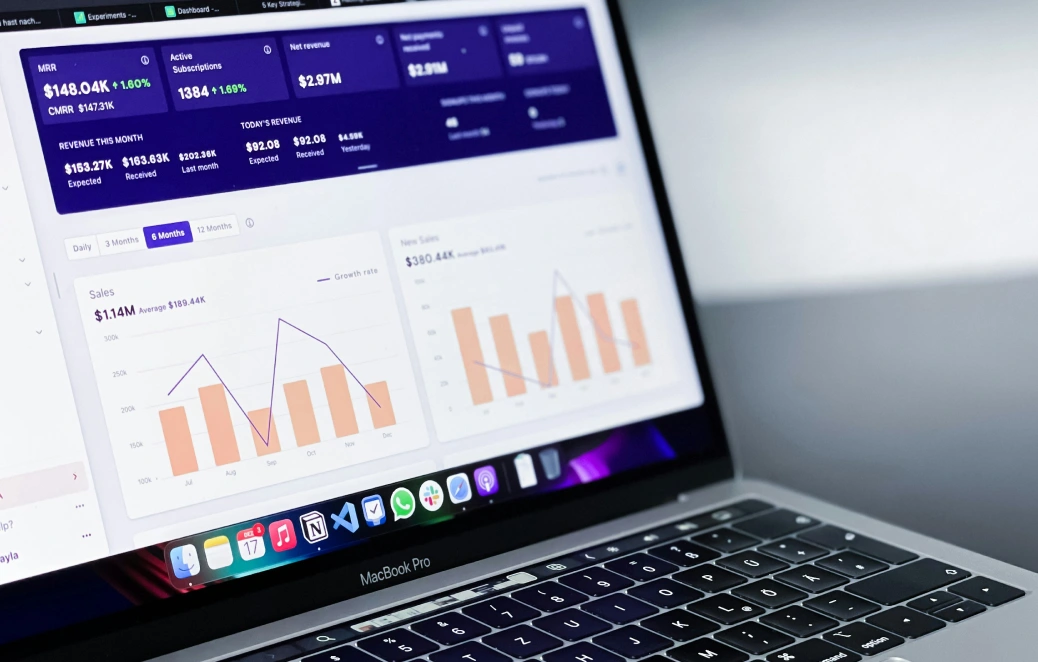How To Measure Effectiveness Of Shareholder Meetings

Chief Executive Officer

Shareholder meetings are more than just a formality - they're crucial for building trust, sharing information, and engaging investors. But how do you know if your meeting was successful? It’s not enough to count attendees or questions asked. Instead, you need clear goals, measurable metrics, and actionable feedback. Here's how to evaluate effectiveness:
- Set Clear Goals: Define specific outcomes like voting participation, engagement levels, or improved shareholder trust.
- Track Metrics: Measure attendance, voting rates, Q&A participation, and survey feedback.
- Gather Qualitative Insights: Look for detailed feedback on transparency, trust, and whether the meeting addressed shareholder concerns.
- Leverage Tools: Use surveys, voting systems, and analytics platforms to collect and analyze data.
- Act on Feedback: Use the results to improve future meetings, ensuring they align with shareholder expectations and corporate objectives.
Shareholder Meetings and Corporate Governance
Setting Success Criteria for Shareholder Meetings
For a shareholder meeting to be truly effective, companies need to define clear benchmarks of success. Without these, evaluating the meeting's impact can become a matter of opinion rather than fact. The focus should be on setting specific, measurable goals that align with the company’s strategic objectives and shareholder expectations.
Identifying Key Meeting Objectives
Shareholder meetings should go beyond fulfilling regulatory requirements. They play a critical role in corporate governance and decision-making, covering essential tasks like board elections, proposal approvals, and financial oversight.
These meetings should also foster transparency and encourage active shareholder participation. Shareholders should feel empowered to ask questions, influence decisions, and stay informed about the company’s financial performance, strategic direction, and corporate responsibility initiatives. This kind of openness strengthens long-term relationships with investors.
For family-owned businesses, the goals often expand to include building trust and creating closer connections between shareholders and company leadership.
Setting Measurable Outcomes
Broad goals need to be translated into specific, measurable outcomes to evaluate the success of a shareholder meeting. Metrics such as proposal approval rates and participation levels - like attendance percentages and the number of Q&A contributions - can provide insight into stakeholder confidence and highlight areas for improvement.
Post-meeting surveys are another valuable tool, offering quantitative feedback on the meeting’s effectiveness. These insights allow companies to fine-tune future meetings to better engage their stakeholders.
Aligning Criteria with Corporate Governance Standards
Success criteria should align with corporate governance standards and regulatory requirements to ensure all agenda items are addressed fairly and voted on appropriately.
However, compliance alone isn’t enough. Effective governance also means evaluating the quality of the decision-making process. This includes ensuring shareholders have access to the information they need to make informed choices, addressing their concerns adequately, and fostering meaningful dialogue between company leadership and investors.
Different industries and business structures may require tailored criteria. Public companies, for example, face unique expectations, while family businesses might prioritize relationship-building metrics. By combining measurable targets with qualitative assessments, companies can create a system that promotes better engagement and continuous improvement. Up next, we’ll delve into the quantitative metrics that help capture these outcomes.
Quantitative Metrics to Measure Meeting Effectiveness
When it comes to evaluating the success of shareholder meetings, numbers provide clarity. Quantitative metrics give you concrete data to measure performance and identify areas for improvement. These metrics turn subjective opinions into actionable insights, aligning directly with your defined success criteria and paving the way for deeper qualitative analysis.
Attendance and Participation Rates
Attendance rates are a foundational metric for assessing meeting effectiveness. Tracking both in-person and virtual attendance helps you understand shareholder preferences. Virtual attendance often surpasses physical attendance, but the ideal level can vary depending on factors like company size and industry.
Voting participation rates offer another layer of insight, measuring the percentage of outstanding shares that cast votes - whether through proxies or live voting. High participation reflects strong shareholder engagement.
For virtual meetings, the duration of attendance is particularly telling. Monitoring how long participants stay connected can highlight engagement issues. For example, if many attendees drop off early, it may suggest problems with the content or pacing.
Examining the geographic distribution of attendees can also be valuable. This data helps you assess how accessible your meeting is and decide whether a hybrid, virtual, or in-person format best serves your shareholders.
Engagement Metrics
Engagement metrics reveal how actively shareholders participate during the meeting. For instance, question submission rates - whether through live Q&A, chat functions, or pre-submitted inquiries - can indicate the level of interest and involvement.
Live poll participation is another real-time engagement indicator. Tracking how many attendees take part in polls or surveys not only measures engagement but also provides feedback on the content and technical delivery.
In virtual meetings, chat activity and interaction rates are useful metrics. Monitoring chat discussions and reactions offers a glimpse into participation levels, though it’s important to remember that some shareholders may prefer a more passive role.
Session replay views provide insights into ongoing interest after the live event. By analyzing how many people watch replays and which segments draw the most attention, you can identify the most impactful content.
Finally, download rates for meeting materials, annual reports, and supporting documents can indicate how deeply shareholders are engaging with the company’s information. This often correlates with more informed voting decisions.
Post-Meeting Survey Data
Post-event surveys are invaluable for capturing detailed shareholder feedback. Survey response rates are a key metric - higher participation leads to more reliable insights.
Use satisfaction scores and content relevance ratings to identify which parts of the meeting resonated and which need improvement. Metrics like overall satisfaction, content quality, and format preferences help you fine-tune future events.
A Net Promoter Score (NPS) tailored for shareholder meetings can measure how likely attendees are to recommend future events. This provides a snapshot of overall sentiment and perceived meeting value.
For virtual and hybrid meetings, technical experience scores are critical. Evaluating factors like audio quality, video clarity, platform usability, and technical reliability can uncover issues that might impact the overall experience.
Lastly, time allocation feedback sheds light on whether the meeting’s duration and pacing met expectations. Gathering input on overall length, timing of segments, and preferred durations helps optimize planning for future meetings.
Qualitative Measures of Shareholder Meeting Success
While numbers can paint a clear picture of performance, the real story often lies in qualitative insights. These reveal how shareholders feel about your company, their level of trust, and their overall perception of your leadership.
Feedback Quality and Relevance
The quality of shareholder feedback is a strong indicator of their engagement. When attendees share detailed comments on topics like strategic goals, financial performance, or governance practices, it shows they’re not just listening - they’re actively processing and engaging with the material.
By analyzing the themes and subjects that spark the most discussion, you can uncover what matters most to your investors. This insight helps you determine whether your meeting content resonates with their primary concerns and interests.
Perceived Transparency and Trust
Building trust is one of the most important outcomes of any shareholder meeting. To gauge this, pay close attention to shareholder sentiment. Comments about management’s credibility, satisfaction with the level of disclosure, and confidence in the company’s future direction offer valuable clues.
Shareholders who feel the company is transparent often express appreciation for open discussions about challenges, clear explanations of strategies, and honest assessments of market conditions. On the flip side, feedback that hints at confusion, doubt, or calls for more detailed information could point to gaps in communication.
Even the tone of shareholder comments - whether collaborative and positive or critical and defensive - can reveal the strength of the relationship between the company and its investors. Identifying these nuances can help you address trust issues before they grow.
Alignment with Pre-Defined Objectives
Investor perception studies and surveys are essential tools for evaluating whether your shareholder meetings achieve their intended goals. These methods go beyond surface-level metrics to assess how well meetings meet communication objectives, strengthen relationships, and align with broader corporate strategies.
This qualitative feedback offers insights that numbers alone can’t provide. It helps explain the reasons behind attendance patterns, voting behaviors, and engagement levels. By understanding the "why" behind these actions, you can make targeted adjustments to improve future meetings and better address shareholder needs.
sbb-itb-ae35a94
Tools and Technologies for Measuring Meeting Effectiveness
Using the right tools and technologies can make a huge difference in how you gather, analyze, and act on data from shareholder meetings. By combining both quantitative and qualitative approaches, these tools offer a well-rounded view of how effective your meetings are and where improvements can be made.
Surveys and Feedback Forms
Digital survey platforms are a go-to option for gathering post-meeting feedback from shareholders. These tools let you design tailored questionnaires to capture insights on everything from meeting content and presentation quality to overall satisfaction levels.
One of the biggest advantages of these platforms is their ability to collect real-time feedback, especially during virtual and hybrid meetings. Shareholders can share their thoughts immediately after the event, while their impressions are still fresh. This not only improves response rates but also ensures you’re working with timely, relevant data.
Surveys also allow for sentiment analysis by incorporating open-ended questions. When shareholders describe their experiences in their own words, you can uncover patterns in their language that highlight concerns or positive reactions that might not come through in standard rating scales.
To get the most out of surveys, it’s important to ask clear and actionable questions. Go beyond generic satisfaction scores. For example, ask whether shareholders felt informed about key decisions, understood the company’s strategic direction, or trusted the leadership team. These types of questions provide deeper insights into the meeting’s impact.
Voting and Polling Systems
Voting systems are another powerful tool for measuring shareholder engagement and decision-making trends. These platforms track important data such as final vote counts, participation rates, and even how quickly shareholders cast their votes.
Live polling during meetings is an excellent way to gauge engagement in real time. Quick polls can check audience understanding or gather instant feedback on specific topics. This data allows you to adjust your presentation on the fly, spending more time on areas that seem confusing or generating the most interest.
These systems also provide detailed participation metrics, offering insights into voting behavior. For instance, you can analyze which proposals spark the most discussion, how different shareholder groups vote, and whether certain segments tend to vote quickly or take time to deliberate. This information can help tailor future communications and presentations to better meet shareholder needs.
Additionally, the audit trail generated by voting systems is invaluable for governance and compliance. Every vote is timestamped and recorded, creating a transparent record that ensures regulatory requirements are met while also offering rich data for evaluating meeting effectiveness. Integrating these systems with analytics tools adds even more depth to your insights.
Analytics Platforms and Dashboards
Analytics platforms pull together data from various sources to give you a comprehensive view of your meeting’s performance. These tools combine attendance data, engagement metrics, survey results, and voting patterns into easy-to-read dashboards that highlight trends and areas for improvement.
Attendance analytics go beyond simply counting heads. They track when shareholders join and leave, which parts of the meeting hold their attention, and how engagement shifts throughout the event. This data can reveal which topics resonate most and which parts of the meeting might need reworking.
Engagement heatmaps are another useful feature. These visual tools show when shareholder attention peaks or dips during the meeting, helping you pinpoint the most engaging content and identify areas that may need to be restructured.
Some platforms even offer predictive insights by analyzing historical data. They can forecast trends in shareholder participation, predict which topics will spark the most questions, and recommend the best times and formats for future meetings based on past performance.
By tracking sentiment across multiple touchpoints, these platforms provide a well-rounded view of shareholder perceptions. They analyze everything from survey responses and voting patterns to social media mentions, helping you understand how shareholder sentiment evolves over time.
The best analytics platforms offer customizable dashboards tailored to different audiences. For instance, board members might focus on high-level trends, while investor relations teams can dive into detailed metrics for specific shareholder groups. This flexibility ensures that each stakeholder gets the insights they need to make informed decisions.
Using Corporate Optics for Better Measurement

Corporate Optics combines advanced technology with proven event management practices to help organizations improve the effectiveness of their meetings. By integrating technical event production with detailed post-event analytics, it provides insights that organizations can use to make meaningful changes. Let’s explore how Corporate Optics uses its tools and strategies - like end-to-end solutions, AI-powered tools, and comprehensive reporting - to turn raw data into actionable plans.
End-to-End Analytics Solutions
Corporate Optics offers a platform designed to monitor every stage of shareholder meetings, providing real-time data that helps organizers make informed decisions. It tracks attendance and engagement, offering insights to fine-tune meeting structure and timing. The platform also analyzes voting outcomes to better understand shareholder preferences. By pulling data from registration systems, live streams, and feedback forms, it delivers a complete performance overview. Beyond just tracking participants, it evaluates technical performance to ensure a smooth experience from start to finish.
AI-Powered Engagement Tools
To keep meetings interactive and engaging, Corporate Optics uses artificial intelligence to analyze real-time audience behavior. These AI tools measure participation levels and spot trends during virtual or hybrid meetings, allowing organizers to adapt on the fly. Additionally, the technology streamlines feedback processing, helping teams identify areas for improvement and plan better for future events.
Post-Event Reporting and Recommendations
Once the meeting wraps up, Corporate Optics compiles all the collected data into detailed reports. These reports feature customized dashboards tailored to the needs of executives and operational teams, breaking down performance metrics into clear, actionable insights. Recommendations might include adjusting the agenda or improving content delivery. To ensure these insights are put to good use, Corporate Optics also provides follow-up consultations, helping organizations implement changes that can make their next meeting even more effective.
Presenting Results and Driving Continuous Improvement
Once you've analyzed your meeting data, the next step is turning those metrics into insights that inspire action. How you share these findings with stakeholders can make all the difference between a static report and insights that spark real change.
Clear and Visual Reporting
The first rule of effective reporting? Know your audience. Different groups - board members, executives, and investor relations teams - need varying levels of detail. For instance, while 75% of investors prefer digital updates, 60% feel communication often lacks clarity. This disconnect highlights the importance of tailoring your presentation style to your audience.
Interactive dashboards are a great tool for ongoing monitoring, offering stakeholders real-time access to key metrics like attendance trends and voting participation rates. Visual aids, such as charts and graphs, make complex data easier to grasp. Instead of overwhelming your audience with raw numbers, try using a visual timeline to show engagement spikes during specific agenda items. Summary tables can also help by organizing data into clear categories, such as pre-event registration, live participation, and post-event feedback. Companies that prioritize timely and clear updates are more likely to maintain investor trust and support. By presenting data visually, you create a strong foundation for deeper discussions about strengths and areas for improvement.
Identifying Strengths and Areas of Improvement
Clear reporting is just the start. To truly understand your data, dig deeper into patterns and trends. Look at shareholder behavior, voting patterns, and engagement levels to uncover insights that can shape better strategies for future meetings. The key is moving beyond surface metrics to understand the "why" behind the numbers.
For example, strong indicators like high attendance rates, active Q&A sessions, and positive survey feedback can highlight what worked well. Did a particular presentation format encourage more questions? Did specific agenda items generate higher interest? On the flip side, lower voting participation or poor satisfaction scores in certain areas can pinpoint challenges that need addressing.
Surveys are especially useful for spotting recurring themes. Structured feedback mechanisms not only show investors that their opinions matter but also provide valuable insights. Open-ended responses often reveal deeper, systemic issues that raw numbers might miss. Comparing your current data with historical trends and industry benchmarks can also help determine whether changes reflect meaningful progress or just normal fluctuations. Companies that use predictive analytics to shape their communication strategies have seen a 20% boost in investor engagement, proving how powerful data-driven insights can be.
Actionable Recommendations for Future Meetings
Insights are only valuable if they lead to action. Avoid vague suggestions - focus on specific, measurable steps tied to your objectives.
For instance, if data shows shareholders are consistently asking about certain topics, consider restructuring your agenda to dive deeper into those areas. If technical issues caused participation to drop, outline clear steps to improve infrastructure and implement backup systems. Similarly, if a particular presentation style led to higher engagement, document it as a best practice for future use.
To ensure follow-through, assign accountability. Designate team members to oversee each recommendation and set clear deadlines for completion. Regularly reviewing your action plans helps maintain momentum and reinforces confidence in your company’s governance.
Incorporating shareholder feedback into your strategies can go a long way toward building stronger engagement. This might mean tweaking communication schedules, experimenting with new presentation formats, or adding interactive elements based on recurring feedback.
Beyond individual meetings, these insights can shape your broader investor engagement strategy. With 80% of investors turning to social media for investment decisions, your meeting data can inform initiatives like quarterly updates, investor calls, and other touchpoints throughout the year. Make sure to document successful changes and their outcomes - when a recommendation leads to improved metrics, capture both the action and the results. Over time, this ongoing cycle of adjustment and learning will strengthen your shareholder engagement program and build lasting trust.
Conclusion: Key Takeaways for Measuring Shareholder Meeting Effectiveness
Measuring the effectiveness of shareholder meetings goes beyond simply collecting data - it's about creating a feedback loop that strengthens governance and builds better engagement. The most forward-thinking companies recognize that combining hard numbers with qualitative feedback offers a fuller understanding, paving the way for meaningful improvements.
At its core, effective measurement blends quantitative metrics with human insights. This combination not only helps pinpoint when and where issues arise but also uncovers their underlying causes, enabling companies to implement focused solutions. These principles not only echo earlier discussions but also highlight pathways for actionable change.
Modern technology plays a pivotal role here. Advanced platforms now allow organizations to gather and analyze meeting data in detail. From attendance tracking to voting results and statistical analysis, these tools generate reports that empower stakeholders to make informed decisions for future meetings. The ability to collect data instantly also supports trend analysis and forecasting, providing a foundation for continuous improvement.
Another key advantage of modern platforms is their audit trail functionality, which creates a historical archive of meeting data. This long-term perspective is invaluable for spotting trends and understanding how adjustments to meeting formats, timing, or content influence shareholder engagement over time.
To truly drive progress, the measurement process must be actionable and forward-looking. Post-meeting evaluations that incorporate shareholder feedback alongside technology performance metrics help organizations assess what worked and what needs improvement. The goal is to move beyond data collection - it's about applying insights to make tangible changes that shareholders will notice and value.
Customization and integration further enhance the process. Companies can tailor measurement systems to meet specific needs, ensuring they remain adaptable to evolving shareholder expectations and regulatory demands. This flexibility allows organizations to refine their approach continuously, keeping pace with change.
Ultimately, companies that treat measurement as an ongoing strategic effort - not just a one-off task - see the greatest gains in shareholder satisfaction. By setting clear success criteria, using both numerical and qualitative data, and consistently acting on insights, organizations can foster stronger relationships with shareholders and improve governance as a whole.
As outlined earlier, when measurement becomes a continuous, strategic initiative, the benefits are clear: higher shareholder trust, better governance outcomes, and more productive meetings that align with the interests of all stakeholders.
FAQs
What are some measurable goals to track the success of a shareholder meeting?
When planning shareholder meetings, having clear, measurable goals is key to ensuring success. These goals could include boosting participation rates, securing a specific percentage of votes on critical issues, or enhancing attendee engagement through metrics like survey responses or feedback scores.
Additionally, objectives might center on achieving specific outcomes, such as passing resolutions, electing board members, or maintaining full compliance with legal and regulatory standards. By setting well-defined, quantifiable targets, companies can assess the meeting's success and pinpoint opportunities to make future meetings even more effective.
How can companies effectively use feedback from shareholder meetings to improve future events?
To get the most out of feedback from shareholder meetings, companies need to dig into the data and look for patterns or actionable takeaways. Using tools like surveys, voting systems, and analytics platforms can make it easier to spot key areas that need attention and evaluate how well the meeting met its goals.
Acting on the feedback quickly is just as important. Addressing concerns and keeping shareholders in the loop about the steps being taken shows openness and a dedication to improvement. This approach helps build stronger trust and engagement, setting the stage for more productive meetings in the future.
How do advanced technologies and analytics improve the effectiveness of shareholder meetings?
Advanced technologies and analytics are transforming shareholder meetings, making them more engaging, transparent, and efficient. Virtual meeting platforms and secure voting systems, for example, are breaking down participation barriers, allowing more shareholders to take part and ensuring a more inclusive process.
Analytics tools are another game-changer. They allow companies to collect and analyze real-time data, offering insights into shareholder feedback, predicting voting patterns, and fine-tuning communication strategies. These advancements simplify operations, promote openness, and align meetings with the expectations of modern governance, leading to more effective and meaningful outcomes.
Related Blog Posts









